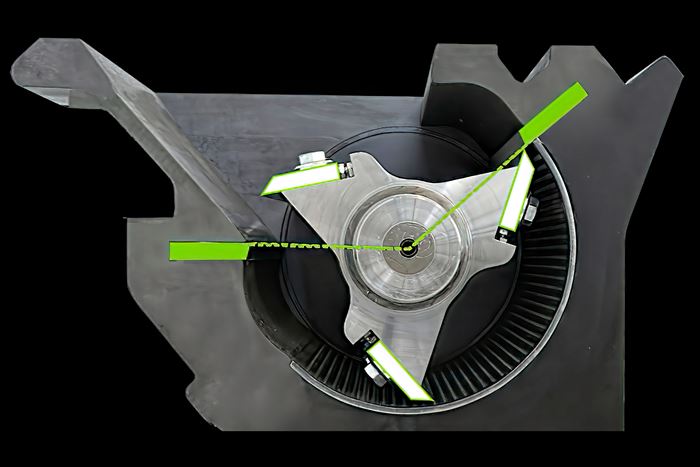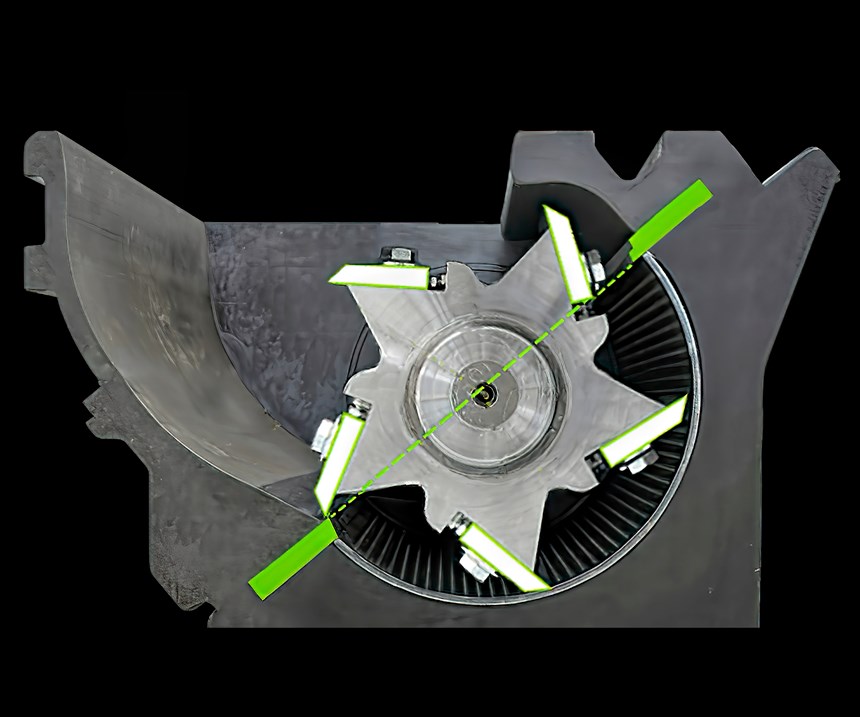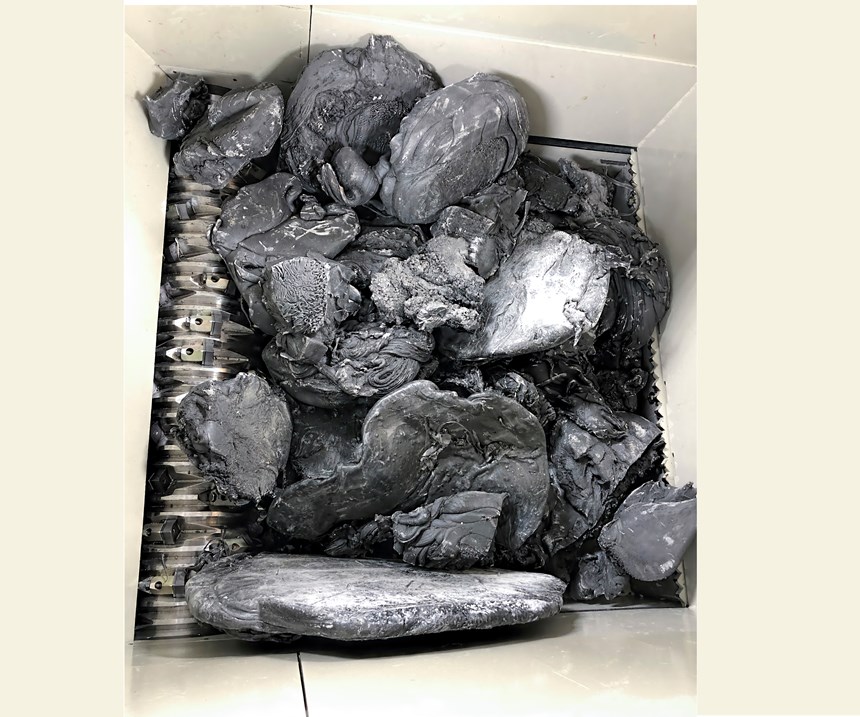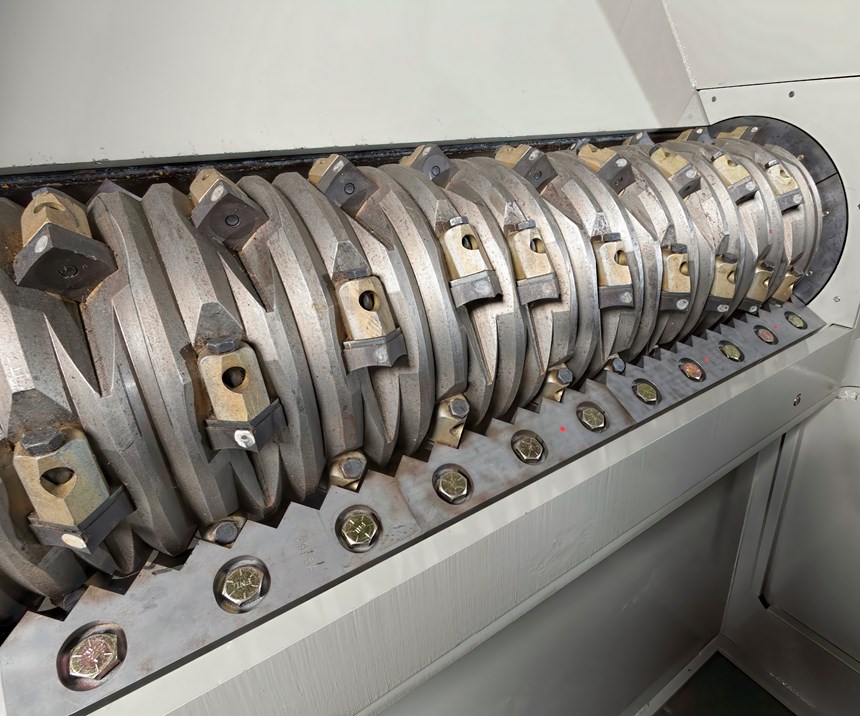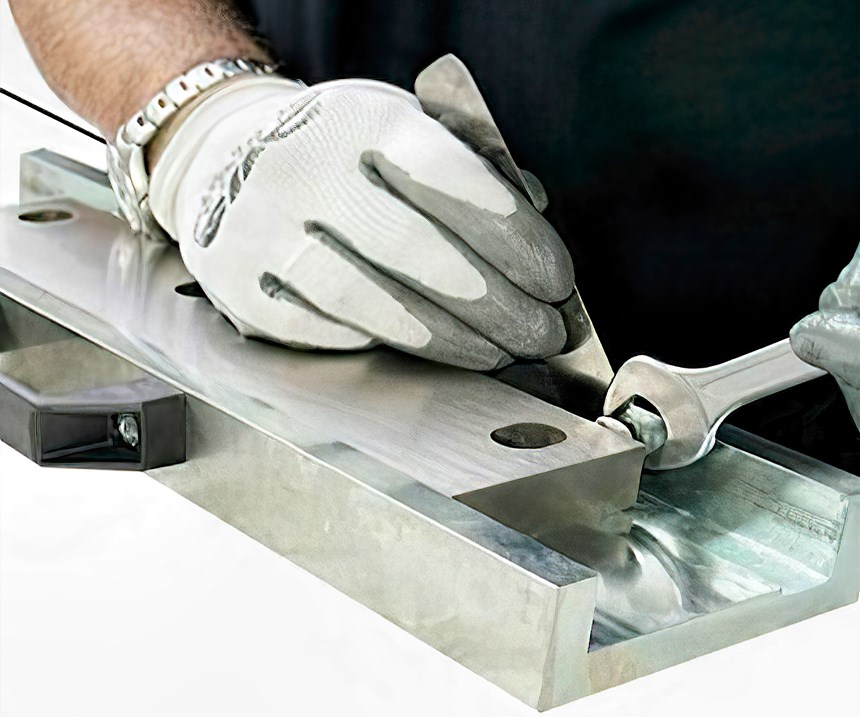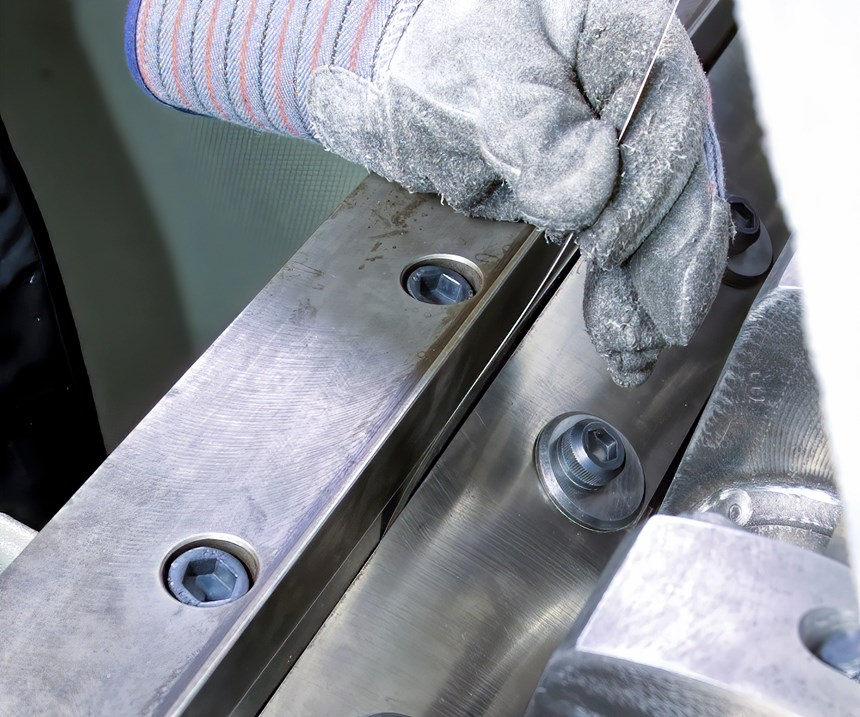There’s an old saying: “The older I get, the less I know for certain.” After 35 years of answering questions about shredding and grinding equipment, I continue to learn about what equipment will—and will not—do and I am often reminded why this statement rings true. For this reason, I tend to ask more and more questions about every application.
At the same time, however, I find that there are a number of comments, questions, problems and circumstances that are quite common—and often a little surprising. Let me share a few of them here.
“But the throughput rating is . . .” I take a lot of calls with questions about throughput. Some involve potential customers who have identified equipment they want to purchase for a new application based on its size/throughput, while many others involve throughput changes when an existing granulator moves to a new application.
In the case of a new machine, someone might say, “I’m thinking of this machine because I need 400 lb/hr.” But as we talk about the application, I often make a different recommendation and tell them, “If you need to granulate 400 lb/hr of that particular material, this machine won’t do it. You’re going to need to look at this model instead.”
“But why?” is the question. “Your website said 400 lb/hr.”
“Yes,” I reply, “but 400 lb of this material isn’t the same as 400 lb of that one.” It’s a fact that some materials are a lot harder to granulate than others. For example, the easiest material in the world to granulate is polystyrene. It processes considerably faster than something like polyethylene or polypropylene. The difference in throughput is night and day, probably 40%.
But even if you’re granulating the same material, throughput and performance differences can still be substantial. A granulator that works beautifully in one application often won’t work for another. For example: a customer buys a grinder for injection molded PET preforms—very dense small parts that are going to be blow molded into much larger bottles or jugs. If you select a machine to grind PET preforms, you don’t need a large hopper or cutting chamber, though you do need the ability to cut through a fairly thick part. So you can use a smaller grinder, equipped with a tangential chamber, a three-blade rotor, and a little extra horsepower. Because the regrind is so dense, you don’t need a huge discharge bin.
But if you move that granulator down the line, to where you’re generating PET bottle scrap, you may find that the tangential chamber is too narrow—the bottle either won’t fit or you can’t get the bottles to flow through the chamber, hopper and rotor smoothly enough to keep up throughput. And, because the bottle wall material is much less dense—much lighter—it’s not going to fall as easily through the screen to the discharge bin. It’s also going to overflow that bin much more quickly.
So, if you want a granulator that would deliver required throughput for both applications, you’ll want to do a little homework up front. A better granulation solution, depending on the specifics, would probably involve a larger hopper, a super-tangential chamber, a five-bladed rotor, a larger discharge bin and, very probably, a blower system that not only evacuates the bin, but draws light bottle regrind smoothly through the machine. You won’t need the big hopper or blower when you switch back to preforms, but you’ll appreciate the five-bladed rotor and the extra horsepower.
“Same material. What’s the difference?” In a world with hundreds of additives and fillers, the need to granulate scrap from a “designer polymer” is always a possibility. In this case, I’ve learned to make fewer and fewer assumptions about what materials will, or will not, shred or granulate easier than others. When in doubt, one must test.
So recently, I set up a test to shred and granulate two gaylords full of purgings—about 1000 lb of each. All were comprised of the same base material—a PP/HDPE blend with additives—and were roughly the same in size (10-40 lb), composition, and color. For all intents and purposes, the purgings looked identical.
I selected a test shredder for the job, based on experience and input from the processor that produced a lot of these purgings. The processor needed a solution that would provide the throughput needed to meet the “purge surge” that happened with every production changeover, as personnel “dialed in” a new formulation.
We turned on the shredder and dumped in the first gaylord. Some 25 min later, great results: Granule sizes were good and uniform—just about perfect. Cuts were clean and sharp. Great throughput. Machine came through in great condition.
In went the second batch, and out went the rest of the day. Despite the apparent similarities, these purgings would not process smoothly. The material proved to be stretchy and harder to cut. Friction built up and created heat. Some of the regrind started to soften and melt. A sticky goo accumulated in the rotor screen. Despite cleaning, inspection, and adjustments, the process took hours.
A little detective work after the test explained the differences and led to a solution: The first batch of purgings, made early in the line setup, contained a higher level of calcium carbonate. The excess of this filler acted to soften and lubricate the shredding process. The second batch of purgings—more representative of the production material—contained far less of the filler, but a similar amount of tackifier, accounting for the friction, melting, and mess.
The eventual solution was a larger, more powerful shredder with a water-cooled cutting chamber. By keeping the rotor cool, this model minimized frictional heat, kept the material cooler and firmer, and enabled the rotor knives to “grip” and slice through it more cleanly. This change did the trick.
Without testing, we would never have guessed the difference. That would have led to a bad surprise!
“Need a new grinder.” Finally, I still get a lot of people who call and say, “I need a new grinder. Mine just isn’t making it.” So, I ask them, “What problems are you having?” The list always includes items like this:
• “Terrible regrind quality.”
• “There’s so much dust that I can hardly convey the material. The loader filters are constantly blinded and need constant cleaning.”
• “I can’t get it to grind this part without stalling or jamming up.”
• “This grinder can’t keep up. I can’t get regrind out fast enough.”
I’ve been getting this question throughout my career in plastics processing and my response is always the same: “Before you consider a new grinder, do one thing: Open it up, check the knives and sharpen them. Then, check the knife gaps.”
I can’t tell you the number of times that I have been out to look at a machine whose owners believe is headed for the scrap heap. There are several potential causes for the above problems, but the number-one cause is dull or poorly adjusted knives. I know that on some older granulators, it’s hard, and even a little hazardous, to change, sharpen, or adjust the knives. But it can be done. Unless you’re running abrasive or glass-filled materials, you might be able to get away with as few as two or three sharpenings a year. And, knife sharpening/replacement doesn’t involve a lot of downtime—a couple of hours or less, or perhaps a maximum of 4-5 hr on a large machine.
Newer-generation granulators typically have pre-adjustable knives, which can be fixtured and adjusted outside the granulator, making the installation and maintenance of sharp knives a lot easier and, more importantly, safer. For some processors considering an investment in new equipment, that’s a key consideration.
So, a final surprise, which to me isn’t so surprising: Often, for a particular application, you can fix granulator performance problems by just sharpening the knives and adjusting the gaps. If that doesn’t work, then you’ll know that a service call—or a new granulator—really is needed.
Like a lot of other plastics processing machinery, size-reduction equipment doesn’t get much attention unless there’s a problem or an entirely new application challenge. So, when it’s time for you to repair or upgrade your size-reduction equipment, do two things with the help of your supplier: First, review its maintenance/repair history and optimize future maintenance (especially knife sharpenings) to maximize equipment life and performance. Second, explore the extensive configurability of new size-reduction equipment, because a carefully chosen configuration can reduce labor inputs and horsepower requirements, eliminate excess noise, save energy, and add valuable flexibility to meet varied application requirements.
About the Author
Dave Miller is general manager of size reduction for the Conair Group. For nearly 35 years, Dave has worked with plastic processors throughout North America to provide granulation and shredding equipment to meet their size-reduction requirements. His work experience includes 31 years with Rapid Granulator, during which he held positions in direct sales, sales management, sales engineering, customer support, training and project management. Contact: 724-584-5580; dmiller@conairgroup.com; conairgroup.com.
Related Content
Purecycle to Receive Expanded FDA Letter of No Objection for PureFive Resin
LNO expands the conditions of use for which the recycled polypropylene can be used.
Read MoreExtrusion Technology Extended to Injection, Enabling Up to 100% Regrind Usage
Twin-barrel (shot-pot) press can handle more regrind, offers other benefits to molders.
Read MoreNovel Line Turns Fluff to Blown Film
Processor Bioflex of Mexico is utilizing Reifenhäuser Blown Film’s EVO Fusion technology to integrate postindustrial and postconsumer recycled materials into products.
Read MoreCoinjection Technology Showcases Recycled Material Containment
At Fakuma, an all-electric PXZ Multinject machine sandwiches a black core made of mechanically recycled PC/ABS within an outer layer made of chemically recycled ABS.
Read MoreRead Next
Lead the Conversation, Change the Conversation
Coverage of single-use plastics can be both misleading and demoralizing. Here are 10 tips for changing the perception of the plastics industry at your company and in your community.
Read MoreBeyond Prototypes: 8 Ways the Plastics Industry Is Using 3D Printing
Plastics processors are finding applications for 3D printing around the plant and across the supply chain. Here are 8 examples to look for at NPE2024.
Read MoreSee Recyclers Close the Loop on Trade Show Production Scrap at NPE2024
A collaboration between show organizer PLASTICS, recycler CPR and size reduction experts WEIMA and Conair recovered and recycled all production scrap at NPE2024.
Read More

